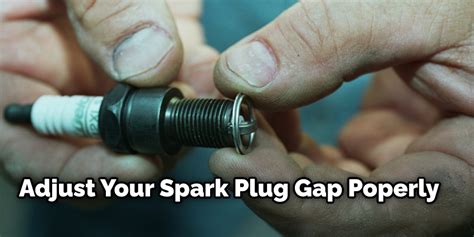How to Gap Spark Plugs: A Comprehensive Guide
Spark plugs are essential components in your vehicle's engine, responsible for igniting the air-fuel mixture. Properly gapped spark plugs ensure optimal combustion, leading to improved engine performance, fuel efficiency, and longevity. A gap that's too wide or too narrow can significantly impact your engine's health. This guide will walk you through how to accurately gap your spark plugs.
Understanding Spark Plug Gaps
Before you begin, it's crucial to understand what a spark plug gap is and why it matters. The gap refers to the distance between the center electrode and the ground electrode of the spark plug. This space needs to be precise; otherwise, your engine might misfire, struggle to start, or experience decreased performance. The recommended gap is usually specified in your vehicle's owner's manual or on the spark plug packaging. Always refer to these sources for the correct gap for your specific vehicle.
Why is the Gap Important?
The gap determines the voltage required to jump the gap and ignite the air-fuel mixture.
- Too wide of a gap: Requires a higher voltage, which your ignition system might struggle to provide, leading to misfires.
- Too narrow of a gap: Can lead to fouling (carbon buildup) on the spark plug, resulting in poor performance and potential engine damage.
Tools You'll Need
To gap your spark plugs, you'll need a few essential tools:
- New Spark Plugs: Ensure you're using the correct spark plugs for your vehicle.
- Spark Plug Gap Tool: This tool is crucial for accurate measurement and adjustment of the gap. These are inexpensive and readily available at most auto parts stores. They usually come with various gauge sizes.
- Spark Plug Wrench: This will allow you to remove and install the spark plugs without damaging them. Choose the correct size for your vehicle's spark plugs.
- Wire Brush (optional): Helpful for cleaning off any dirt or debris from the spark plug.
- Owner's Manual: To verify the correct spark plug gap for your specific vehicle.
Step-by-Step Guide to Gapping Spark Plugs
Safety First: Always disconnect the negative terminal from your battery before working on your vehicle's ignition system.
-
Consult Your Owner's Manual: Find the recommended spark plug gap for your vehicle. This information is usually found in the maintenance section.
-
Remove the Old Spark Plugs: Use your spark plug wrench to carefully remove the old spark plugs from your engine. Be gentle to avoid damaging the threads.
-
Inspect the Old Spark Plugs: Examine the old spark plugs for any signs of wear, damage, or fouling. This can help you diagnose potential engine issues.
-
Measure the Gap (if reusing): If you are reusing spark plugs (not recommended for most situations), use your gap tool to measure the gap between the electrodes. Compare this measurement to the specification in your owner's manual.
-
Adjust the Gap (if necessary): If the gap needs adjustment, carefully bend the ground electrode using the gap tool. Gently bend the electrode; excessive force can break it. Check the gap frequently during adjustment.
-
Clean the Spark Plugs (optional): Use a wire brush to gently clean any dirt or debris from the spark plugs. This will help ensure reliable ignition.
-
Install the New Spark Plugs: Carefully install the new spark plugs, using the spark plug wrench to tighten them to the manufacturer's specified torque. Over-tightening can damage the spark plug threads.
-
Reconnect the Battery Terminal: Once all spark plugs are installed, reconnect the negative terminal to your battery.
-
Test the Engine: Start your engine and listen for any misfires or unusual sounds.
Troubleshooting
If you're still experiencing issues after gapping your spark plugs, consider the following:
- Incorrect Gap: Double-check your work to ensure the gap is correctly set.
- Damaged Spark Plugs: Inspect the spark plugs for any damage or cracks.
- Other Engine Problems: Misfires can also stem from other engine issues like faulty ignition wires, coil packs, or fuel delivery problems. Consult a mechanic for further diagnosis if needed.
By following these steps, you can accurately gap your spark plugs, ensuring optimal engine performance and longevity. Remember to always consult your vehicle's owner's manual for specific recommendations and safety precautions.
